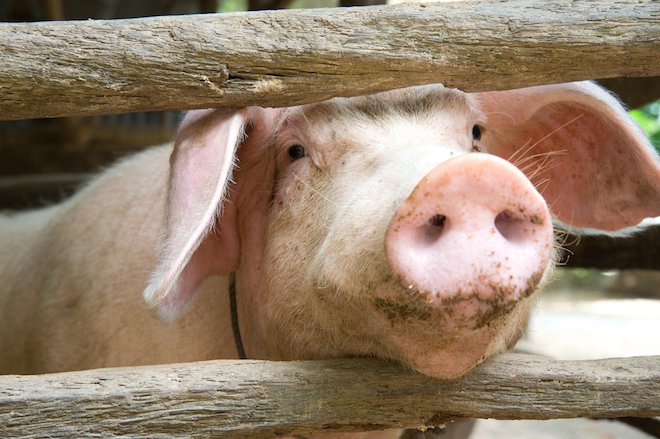Google last week revealed for the first time that it consumed enough electricity to power 200,000 homes in 2010. The company also said that it intends to source more than a third of its electricity from clean sources by 2012.
One way that it’s trying to minimize its carbon footprint is by signing up for carbon offsets.
One of these projects comes from Duke University, where a new facility uses hog waste to generate power. Duke developed the pilot project to demonstrate the economic feasibility of capturing methane emissions from large hog farms and converting those emissions to electricity.
Google has just announced that it will take on part of the operating and maintenance costs in exchange for carbon offsets, to help achieve its carbon-neutral goal.
Duke engineered the new facility as an open source design that is freely available to the hog industry. However, even though the design is free, hog farmers may be hesitant to invest in the equipment. The school hopes that Google’s involvement will provide some reassurance that the economics are solid.
Jolanka Nickerman, who directs the carbon offsets team at Google, wrote in a blog post last week, “Through this pilot, Duke is showing how these projects can make economic sense for North Carolinians and lead to dramatic reductions in emissions over the long term. We hope that technologies like this can scale across the U.S. and the world.”
Aside from reducing greenhouse gas emissions, the new facility helps to reduce odors and prevent contamination of local waterways. Electricity from the operation could be used to reduce utility costs for the hog farm, or it could be sold back to the grid.
The basic principle behind hog waste-to-electricity is simple. Animal waste naturally produces methane gas as it decomposes. In a conventional hog farm, waste is stored in open lagoons and methane simply rises into the atmosphere.
According to Duke, methane is a greenhouse gas 21 times more potent than carbon dioxide.
In Duke’s prototype, waste is sent to a container called an anaerobic digester, in which it decomposes. A plastic dome over the digester captures the methane, which is then burned to run a small turbine.
In addition to treating solids, the anaerobic digester also handles liquid waste. After cycling through the digester and an aerator, the treated liquid can be re-used as flush water to clean the hog houses. Treated liquid waste may also be clean enough for use in irrigation.
The Duke facility, located at the 9,000 head Lloyd Ray farms near Yadkinville, North Carolina, generates enough electricity to power 35 homes. In terms of reducing greenhouse gas emissions, that’s the equivalent of taking 900 cars off the road, according to Duke.
Duke partnered with North Carolina-based Duke Energy to share the cost of constructing the facility along with the first ten years of operating and maintenances expenses, which are now shared partly with Google. Federal and state agencies also put up almost half the cost in grants, to the tune of $500,000.
If Duke and Duke Energy want to make a name for themselves in the hog waste-to-energy field, they better act fast. Just last year the U.S. Environmental Protection Agency and the Department of Agriculture partnered up to expand the federal Agstar program, which seeks to introduce waste-to-energy equipment all across the livestock industry.









